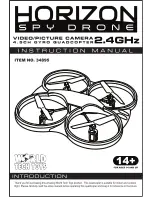
Rev 2.1/8-06
APPENDIX • LOW VACUUM WARNING BUZZER
Page 2
If the vacuum system experiences leakage while the lifter is attached to the load, the vacuum
pump turns on automatically, as required to maintain sufficient vacuum. The alarm also sounds
while the pump is running, to signal the reduction in vacuum to the operator. If the alarm
sounds while you are lifting a load, make sure the vacuum gauge shows a vacuum level of 16"
Hg [-54 kPa] or higher. If not, immediately move away and stay clear of the load until it can be
lowered to the ground or a stable support.
WARNING: Stay clear of any suspended load while alarm is sounding.
Discontinue lifter use until the cause of the vacuum loss can be determined. Using the lifter on
contaminated, rough or porous surfaces may result in a vacuum loss, due to leakage between
the vacuum pads and the load. Since the alarm may sound in such circumstances, consult the
OPERATION section of the main instructions (see T
O
A
PPLY THE
P
ADS TO A
L
OAD
: Vacuum Level on
Other Surfaces) to determine whether the lifter can be used to lift the load. If the vacuum loss is
due to any other cause, perform inspection and maintenance as needed to identify and correct
any deficiency before resuming normal operation of the lifter.
I
NSPECTIONS AND
T
ESTING
When performing inspections and tests of the lifter as directed in the MAINTENANCE section of
the main instructions, be sure to include the low vacuum warning buzzer whenever applicable.
Since the warning buzzer functions in a way that is completely parallel with the low vacuum
warning
light
, consult the V
ACUUM
S
WITCH
A
DJUSTMENT
discussion in the MAINTENANCE section of
the main instructions for inspection, testing and adjustment procedures.
R
EPLACEMENT
P
ARTS
L
IST
Stock No.
Description
Qty.
64752
Audio Alarm - 5-15 V DC - Panel Mount
1
SERVICE ONLY WITH IDENTICAL REPLACEMENT PARTS
SUPPLIED BY OR APPROVED BY WOOD'S POWR-GRIP CO., INC.
































